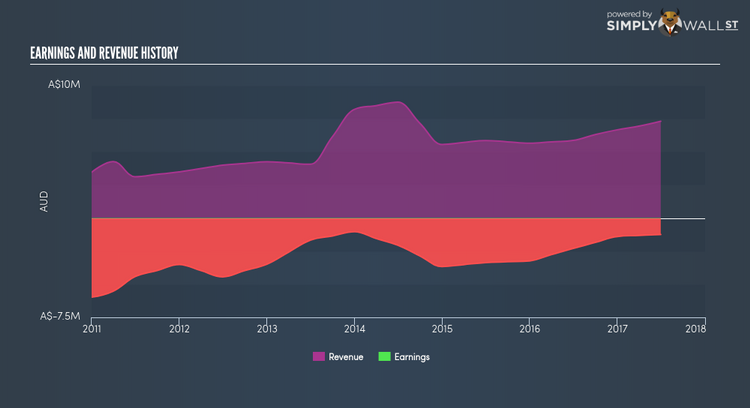Does Suda Limited’s (ASX:SUD) 46.6% Earnings Growth Make It An Outperformer?

After looking at Suda Limited’s (ASX:SUD) latest earnings announcement (30 June 2017), I found it useful to revisit the company’s performance in the past couple of years and assess this against the most recent figures. As a long term investor, I pay close attention to earnings trend, rather than the figures published at one point in time. I also compare against an industry benchmark to check whether Suda’s performance has been impacted by industry movements. In this article I briefly touch on my key findings. Check out our latest analysis for Suda
Did SUD’s recent EPS Growth beat the long-term trend and the industry?
I like to use data from the most recent 12 months, which annualizes the most recent half-year data, or in some cases, the latest annual report is already the most recent financial year data. This allows me to analyze different stocks in a uniform manner using new information. Suda’s latest twelve-month earnings -A$1M, which compared to last year’s level, has become less negative. Given that these values are relatively myopic, I’ve determined an annualized five-year value for SUD’s earnings, which stands at -A$3M. This shows that, though net income is negative, it has become less negative over the years.
We can further analyze Suda’s loss by looking at what’s going on in the industry on top of within the company. Firstly, I want to quickly look into the line items. Revenue growth over last couple of years has grew by 10.29%, indicating that Suda is in a high-growth phase with expenses shooting ahead of high top-line growth rates. Viewing growth from a sector-level, the Australian pharmaceuticals industry has been growing its average earnings by double-digit 10.76% in the prior twelve months, and a more muted 7.74% over the past couple of years. This means that, even though Suda is currently unprofitable, it may have been aided by industry tailwinds, moving earnings into a more favorable position.
What does this mean?
While past data is useful, it doesn’t tell the whole story. Companies that incur net loss is always hard to predict what will occur going forward, and when. The most valuable step is to examine company-specific issues Suda may be facing and whether management guidance has steadily been met in the past. I suggest you continue to research Suda to get a more holistic view of the stock by looking at:
1. Financial Health: Is SUD’s operations financially sustainable? Balance sheets can be hard to analyze, which is why we’ve done it for you. Check out our financial health checks here.
2. Other High-Performing Stocks: Are there other stocks that provide better prospects with proven track records? Explore our free list of these great stocks here.
NB: Figures in this article are calculated using data from the last twelve months, which refer to the 12-month period ending on the last date of the month the financial statement is dated. This may not be consistent with full year annual report figures.
To help readers see pass the short term volatility of the financial market, we aim to bring you a long-term focused research analysis purely driven by fundamental data. Note that our analysis does not factor in the latest price sensitive company announcements.
The author is an independent contributor and at the time of publication had no position in the stocks mentioned.

